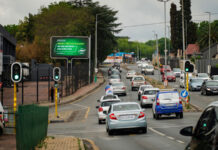With the ongoing strain on South Africa’s electricity grid, and the growing use of renewable energy to mitigate climate change, there is a clear need for reliable and cost-effective energy storage solutions. UWC’s Prof Bernard Bladergroen explains.
Renewable energy resources such as wind, water or solar solutions have shown that clean energy generation is a viable – and increasingly cheap – alternative to traditional power solutions. But we also need better forms of energy storage to accompany that – especially in South Africa, where load shedding is fast becoming a way of life.
“The ability to produce power when the sun shines or the wind blows is only part of the solution. We also need to be able to store power efficiently and discharge it effectively at the appropriate time. For that, we need batteries,” says University of the Western Cape Professor Bernard Bladergroen.
As head of UWC’s Energy Storage Innovation Lab (ESIL), Bladergroen aims to produce batteries with the best possible performance, working in concert with national and international partners in academia and industry – including Eskom.
Low-cost batteries will:
- improve access to electricity, allowing phones and laptops to be charged, increasing access to knowledge;
- provide light after sunset, prolonging the time during which a population can be productive, which increases the competitiveness of the population;
- contribute to GDP growth and increased taxation revenue, as well as meaningful job creation if they are produced in South Africa; and,
- make use of South Africa’s mineral deposits (Manganese, Nickel, Fluor, Vanadium), supporting the mining industry and the country as a whole through mineral beneficiation.
“An increase of grid energy storage capacity will help Eskom integrate more low-cost renewable energy resources,” Bladergroen notes. “Such energy storage may come from a combination of thermal storage (carnot battery), pumped hydro and battery storage, and could also enable us to penetrate areas not currently on the energy grid.”
Beating Load Shedding: A Few Tips For Eskom
To increase energy storage capacity, Bladergroen notes, Eskom could develop a platform allowing them access to battery stored energy from business, homeowners and EV owners.
“With a platform with two million members, each ready to deliver or consume 2.5kW capacity when Eskom needs it, we could solve a great deal of the crisis. You could offer such members good prices for charging their batteries when there is an excess of power – late at night, for example.”
Another thing Eskom can think about is to implement time of use tariffs to manage energy demand.
“The cost of generating electricity from peaker plants is several times higher than the sales price of electricity to the public. If people want to use electricity during peak time, they should be willing to pay the full price (+-R6/kWh) or invest in their own Li-ion energy storage systems, storing electricity when its cheaper and discharging the battery when tariffs are high.”
Energy storage provides the opportunity for a smooth transition to grid modernisation, while providing utilities with capabilities such as load shifting and backup and reserve capacity, and allowing for new technologies and business models.
“It’s only a matter of time: future batteries and supercapacitors are going to change the world,” Bladergroen says. “Renewable energy combined with an energy storage device that could deliver electricity at the cost of electricity from a power station would be a game changer – and the future could be bright for Africa.”
Bernard Bladergroen, Head Of UWC’s Energy Storage Innovation Lab
Prof Bernard Bladergroen, a former student at the University of Twente in the Netherlands, joined the University of the Western Cape (UWC) in 1998 as a PhD student and was appointed as research manager for industrial contract research in 2005, followed by a senior lecturer appointment in 2006. From 2007 Prof Bladergroen accepted his role as the deputy director of the South African Institute for Advanced Materials Chemistry (SAIAMC) at UWC. Prof Bladergroen is currently heading the Energy Storage Innovation Lab (ESIL), which was launched in 2015, focused on electrochemical storage systems, which includes the development of Li-ion, NaFeCl2 and NiFe batteries. ESIL was created as a platform to commercialize emerging technologies in partnership with local businesses.
Better Batteries at UWC’s Energy Storage Innovation Lab
Lithium ion (Li-ion) batteries are developing at an enormous rate and are busy changing the energy landscape as we know it. Li-ion batteries play an important role in the acceleration of the world energy decarbonization process and offer an alternative to the internal combustion engine in the transportation industry. They also form part of a cost-effective renewable energy system, offering a solution to the challenge to align the renewable energy generation capacity does with the energy demand in the economy. South Africa has almost 80% of the world’s known reserves of manganese – an important component in a popular Li-ion battery. But there’s only one facility on the African continent that has the capability to produce Li-ion battery cells at pilot scale: UWC’s Energy Storage Innovation Lab (ESIL).
The Energy Storage Innovation Lab at the University of the Wstern Cape
The Energy Storage Innovation Lab (ESIL) is the culmination of many years of research, development and innovation at the South African Institute for Advanced Materials Chemistry at UWC, especially in the field of Lithium-Ion and Sodium-Halide batteries, battery modules and integrated energy storage systems. ESIL boasts high-tech battery integration and production facilities, and has been involved in the development of a number of advanced storage systems. ESIL’s modular battery system (MBS) is scalable and modular, with series and parallel connection capability, and is stackable and easily integrated for a range of applications, including (thus far): golf carts; battery electric vehicles; backup power solutions; off-grid power systems; and grid-connected storage. The lab also has an extensive network of energy storage developers, manufacturing and system integrators from South Africa, China, India, USA, Germany and other countries.




















































































